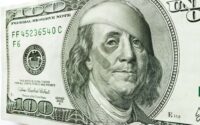Entire Treasury Market Yields at Least 4%, Now Including 30-Year
(Bloomberg) — The US 30-year yield rose to the highest level since November, joining the rest of the Treasury market in offering investors a return of at least 4% after another batch of strong labor-market data.
Most Read from Bloomberg
Yields across the Treasury market climbed Thursday following an upward revision to the fourth-quarter unit-labor-costs growth rate. The 30-year yield rose as much as 9 basis points to 4.045%, up from a 2023 low of 3.5% in early February, and ended the day at around 4.03%.
While shorter-maturity yields have been spurred higher as traders raised forecasts for the peak Federal Reserve policy rate, longer-dated ones respond more to signs of sticky inflation. A jump in a gauge of US manufacturer prices Wednesday stoked fears that a forthcoming companion report on the services sector will remain buoyant and spark further selling.
“Another firm ISM services number on Friday will see higher yields across the curve,” said Jack McIntyre, portfolio manager at Brandywine Global Investment Management. “As a long-duration investor, we are in a tough environment, but we see the backup in yields as an opportunity.”
Treasury yields ticked higher earlier in the session along with rates on European bonds after inflation in the euro area slowed less than anticipated in February, while the core measure surged to a new record. The data reinforced expectations that the European Central Bank will have to push borrowing costs ever higher.
The move spilled over into the Asia Pacific market Friday, with Australian and New Zealand yields pushing higher.
The US Treasury market has erased its January gains, which followed its worst year on record, with renewed bearish sentiment also spurred by robust Chinese economic data.
The 10-year note’s yield traded above 4% for the first time since November on Wednesday and rose as high as 4.09% on Thursday.
Shorter-maturity yields, more sensitive to the eight increases in the Fed’s policy rate over the past year, have exceeded the 4% threshold for varying amounts of time. The two-year yield has traded above that threshold since September and rose to a high of 4.94% on Thursday, a level last seen in July 2007.
The two-year remains the highest-yielding Treasury note or bond, reflecting expectations that the Fed’s rate increases are sowing the seeds of an economic slowdown. Consistent with that, swap contracts referencing Fed meeting dates continue to price in roughly 50% odds that the central bank will lower its policy rate by a quarter point from the peak by the end of the year.
The Fed raised its policy rate most recently to a range of 4.5%-4.75% on Feb. 1. Traders expect the central bank will raise policy to a peak of around 5.5%, according to swaps that reference the Fed’s September meeting.
With long-end yields now back above 4%, some on Wall Street say levels are appealing to build exposure as the prospect of a hard landing for the economy beckons. Priya Misra, global head of rates strategy at TD Securities, said she would “enter some more longs at 4%” in 10- and 30-year Treasuries, noting TD began recommending that trade when yields rose to 3.8%.
Long-dated yields at 4% “will look really cheap” once the Fed pushes unemployment higher and engineers a hard landing, Misra said on Bloomberg Television Thursday. Investors should still retain “some dry powder to keep adding” to the long end as yields could shoot higher to 4.25% in the near term, she said.
(Updates with early Asia trading Friday.)
Most Read from Bloomberg Businessweek
©2023 Bloomberg L.P.
[ad_2]
Source link


